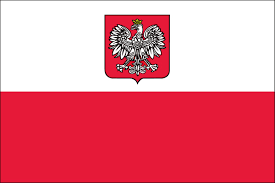century by the legendary English Scientist and philosopher Robert Hooke. Although coil springs have been around for many years, their design hasn’t changed much.
They are basically helical-shaped mechanical devices made out of wound metal. They store potential mechanical energy and release the energy to absorb shock.
Coil springs are made by winding a strand of wire using continuous turns to form a helical coil. Just like the basic design, the purpose of the spring also hasn’t changed much, but the applications of the spring have expanded, forcing manufacturing to make springs in different sizes, types, and from different materials.
At TFC, we have years of experience supplying specialist spring solutions to clients in different industries. Our superior design and manufacturing processes deliver the best performance in every application.
How Coil Springs Are Made
The material and process used to make a coil spring depend on whether the facility is a high or low-production facility. At TFC, we use the most advanced coil spring manufacturing methods and equipment to keep up with our high client demand without compromising the quality of our coil springs.
Coil spring materials
The most commonly used materials in making coil springs are high and medium carbon steel, chromium, vanadium steel, chromium silicon steel, and other grades of stainless steel, nickel, and copper alloys. We can match the type of coil spring material, the application, and the requirements of the client.
Also, not all our coil sprints are made of wire. The metal we use to manufacture coil springs can come in different forms to fit the style and type of the coil spring in question.
Cold winding
Coil springs can be made through cold winding or hot winding. In the case of cold winding the wire will only work if it has a diameter of 0.75 inches or 18mm or less. The manufacturing process typically follows these steps;
- Heat treatment – The wire is heat treated to reach its highest strength level.
- Making the coil – Manufacturers can use one of two methods to produce coil springs. The first one is the mandrel method which uses a winding machine, a lathe, or a hand crank machine. This method is ideal for small production units that don’t have a high output. There’s also the CNC spring coiling method. It is more complex and intricate and produces higher-quality springs. The machine has components that efficiently feed, wind, and configure the coils.
Hot winding
The wire thickness required for hot winding can be thicker. It can vary between 3 inches or 75mm up to 6 inches or 150mm. In hot wining, the wire is heated to 17000F, so manufacturers can work with a larger diameter wire.
- Coiling – The heated metal can be coiled using the mandrel method using the same process as coil coiling, but it requires greater care. You can also use a CNC machine that controls the rotation of the mandrel and pitch distance.
- Cooling – The next immediate step is to cool the wound coil as quickly as possible through quenching. Several quenching methods can be used. Oil quenching is the most popular. The purpose of cooling is to harden the coil’s material and minimize the formation of thermal and transformational gradients that could cause cracking.
- Stress relief – The stretching of the wire when coiling disturbs the natural balance of the molecule within the material, leaving the spring with residual stress. If the stress is not relieved, the spring can have defects, cracks, and a shorter lifespan. Stress relieving is performed by heating the spring to a level below its deformation so the wire becomes malleable but doesn’t melt. The heating process is followed by a slow return to room temperature to allow the molecules to rearrange.
- Finishing – Finishing depends on the design of the spring. Finishing includes the shape, coating, setting of the pitch, and strengthening of the coil. Depending on the client’s needs and the application of the spring, we can grind the spring to flatten the ends, shoot peening to change the mechanical properties of the coil spring and smooth the surface. We can also adjust the pitch and length of the spring and apply the necessary coatings to improve the aesthetic appearance and durability of the spring.
Types of Coil Springs
Coil springs can be classified as either coil or non-coil, depending on the general design of the spring. While all the springs share the helical design, some have unique features that distinguish them from the rest. The most common coil springs we supply include;
Volute coil springs
This type of compression coil spring is made in the shape of a volute, better known as a cone. Volute springs are used in applications involving heavy loads. They can withstand more pressure than other springs because of their unique shape.
When subjected to heavy loads, volute coil springs become stiffer on the edges and distribute the weight downward and outward.
Arc springs
These are also coil springs, also known as bow springs. Arc coil springs were originally developed for use in automotive and mechanical drive trains. They feature an arc shape and don’t run completely straight from one end to the other. Instead, they have a curve in the middle, creating an arc shape. The spring is connected to two objects which it pulls together.
Variable springs
Also known as progressive rate springs, this type of spring comes with a variable rate because of the different distances between their turns. When compressed, the rate of compression in these springs changes between the turns. In other springs, the compression rate is the same because they have the exact distance between their turns.
Torsion springs
Torsion springs are designed to withstand or resist twisting actions. The best example of a torsion spring is in the traditional mousetrap. The torsion coil spring retains its mechanical energy when twisted along its axis. They then release this energy when the lock is removed.
Types of Coil Spring Ends
Besides the main factors of the coil springs, you also need to consider the type of ends of the coil spring. We supply our coil springs in four main ends;
- Closed-end – This is the most common form. They have flat tips that are in contact with the adjacent coil for better stability.
- Square end – The end of the spring has been ground. These end types produce springs with greater deflection than open-end coil springs.
- Pigtail coil spring – The spring’s last coil has a smaller diameter than the rest of the coil. It makes it possible to attach the spring to a mechanism using a bolt or screw.
- Open-end – These are continuous springs where the coil continues on its pitch. Sometimes these are referred to as tangential coil springs.
 With ISO9001: 2015 approval incorporating Design Status, our qualified engineering staff are able to offer a completely free of charge engineering service and are available to assist with part selection, custom design, application requirements, material selection and more.
With ISO9001: 2015 approval incorporating Design Status, our qualified engineering staff are able to offer a completely free of charge engineering service and are available to assist with part selection, custom design, application requirements, material selection and more.








































Follow us